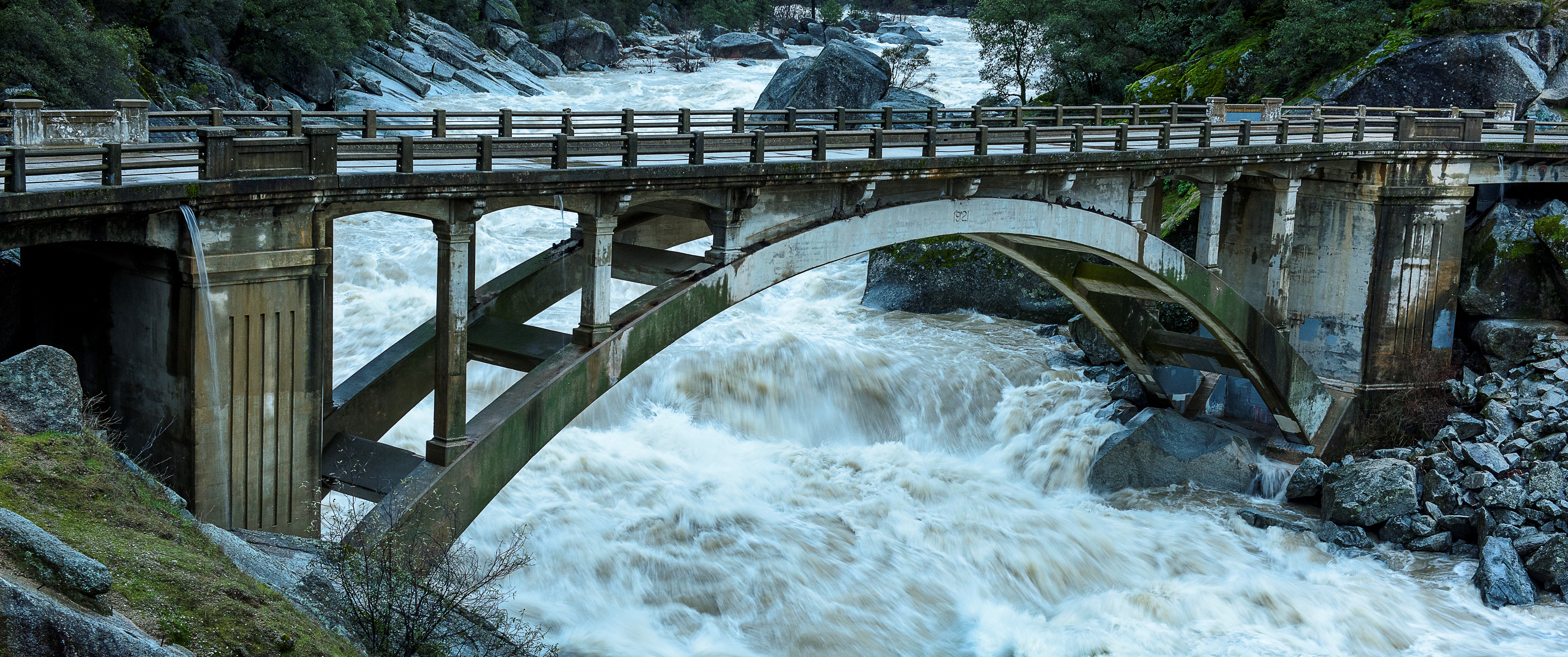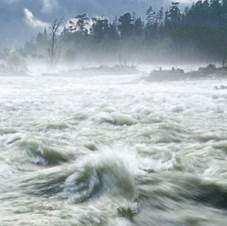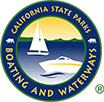



Winter & Spring Storm Boating Safety Information
We urge boaters, paddlers, rafters and swimmers to take extra precautions and to be aware of cold-water dangers this spring to avoid a tragedy.
The ongoing atmospheric river rainfall and spring warm-up are causing rising rivers and stream flow levels not seen in years, especially in areas impacted by snowmelt. Because the water will be very cold and much higher this season, waiting until it is safer to recreate in the summer is critical.
- Swift water boating fatalities double in high water years
- 50 fatalities in combined six most recent high water years
- 24 swift water fatalities in combined 10 low water years
- Nine out of ten drowning victims were not wearing life jackets
 Please review the bullet points, links, videos and safety tips on this page before you head out this Spring/Summer.
Please review the bullet points, links, videos and safety tips on this page before you head out this Spring/Summer.
Dos and Don'ts of Cold Water Boating Fact Sheet
Winter Storm Boating Safety Fact Sheet
Know Before You Go!
Cold and Fast Water Safety Tips
- Many unseen obstacles can be lurking below the water’s surface - this is especially the case with this year’s high runoff following low water years. Drought-stricken forests and storm-driven landslides have filled rivers with submerged trees and rocks. Swift water can make these obstacles even more treacherous.
- Sudden immersion in cold water can stimulate the “gasp reflex,” causing an involuntary inhalation of air or water. It can even trigger cardiac arrest, temporary paralysis, hypothermia and drowning.
- Called cold water shock, sudden immersion begins within one minute in frigid water and victims will lose meaningful movement within 10 minutes and will lose consciousness within one hour.
- When faced with cold, swift water, even the strongest swimmers may be easily overwhelmed. Do not enter the water and never enter the water to rescue a victim. Throw something that floats and call 9-1-1.
- Swimming in open water is more difficult than in a swimming pool – people tire more quickly and can get into trouble.
- Never go on the water alone. Guided trips for solo or inexperienced floaters or paddlers are recommended.
- Although life jackets are strongly recommended when recreating in or near waterways, this year’s expected high runoff in rivers can be dangerous even with the use of life jackets. Conditions change quickly in open water and even the best swimmers can misjudge the water and their skills when boating or swimming. If you are near the water’s edge, wearing a properly fitted U.S. Coast Guard-approved life jacket can increase survival time should you fall in.
- A life jacket can also provide some thermal protection against the onset of cold water shock and keep you afloat until someone else can rescue you.
- Need a life jacket? Many locations across the state allow you to borrow a life jacket for the day or weekend.
- Dress properly for the weather, always wearing layers, and bring an extra set of clothes. Remember, dress for the water temperature, not the air temperature.
- Actively supervise children in and around open bodies of water, giving them your undivided attention. Do not assume that someone is watching them. Appoint a designated “water watcher,” taking turns with other adults.
- Teach children that swimming in open water is not the same as swimming in a pool: they need to be aware of uneven surfaces, river currents, ocean undertow and changing weather.
Cold water immersion is the cause of many boating-related fatalities and simply wearing a life jacket can greatly increase your chances of survival. Even expert swimmers will experience cold water shock in water temperatures below body temperature.
The chances of rescue increase when you hang on to your capsized vessel or are leashed to your board. In whitewater, use a breakaway leash to avoid entrapment with underwater hazards.
1: You have one minute to adjust to the cold shock response – don’t panic, get control of breathing, don’t gasp.
10: You have about 10-minutes of meaningful movement to get help and get out of the water.
1: You have about one hour before you become hypothermic and lose useful consciousness from cold-water immersion.
Winter & Spring Storm Checklist for Marina Operators
Unusual California winters with fast, high water can bring debris and destruction to boating facilities. California State Parks Division of Boating and Waterways advises that marina and harbor managers develop a storm preparation plan that fits the safety needs of each facility.
Here are some recommended practices to prepare your vessel for cold weather conditions. This includes preparing it for storage to protect it from the elements and ensure it is ready for the spring season. Consult your manufacturer’s manual for your specific vessel’s instructions, but below you can find some general guidance on gearing your boat for hibernation.
- Clean and dry the boat bilge. Empty the bilge to reduce the chance of a spill and prevent freezing of the bilge pump. Place an oil absorbent in the bilge to capture excess oil, and dispose of used oil absorbents and the bilge water at your County local household hazardous waste collection center. Remove boat drain plug if stored on a trailer.
- Empty holding tanks and port-a-potties. Find pumpout and dump stations by downloading the Pumpout Nav app or visit DBW’s directory. Use non-toxic antifreeze in holding tank systems and heads.
- Clean your boat inside and out.Choose less-toxic cleaning products with green certifications such as EPA Safer Choice or Green Seal.
- Cover when stored and ventilate to prevent mildew. Custom-made, reusable canvas or synthetic covers protect your boat and allow for air circulation preventing mildew buildup. Recyclable shrink wrap provides a waterproof barrier.
- Clean your dock box and properly dispose of products. Call 1-800-CLEANUP or visit www.earth911.com for hazardous waste disposal locations near you.
- Fill fuel tanks. Keep your tank full to ease condensation and add a non-toxic fuel stabilizer. Change or install fuel/water separators and filtration systems. Follow engine manufacturer recommendations and check for additional recommendations from BoatUS here.
- Drain water systems. Be sure to drain both the engine cooling and drinking water systems, and fill each with non-toxic antifreeze. Never use automotive antifreeze, which is toxic to the environment and can cause serious illness if used in drinking-water systems.
- Check and charge batteries. Clean terminals and use a terminal protector. If you remove your battery from your boat, keep it in a dry place and connect it to a trickle marine charger. If you keep your battery in your boat, unplug it and fully charge it periodically.
- Inboard Engines: Change and recycle used oil and oil filters. Flush engine(s) with fresh water and drain if your boat is out of the water. Drain manifolds. Check coolant in closed cooling system.
- Outboard Engines: Change and recycle oil in lower unit. Flush engine with fresh water. Disconnect fuel hose and run engine until it stops. Store engine upright for proper water drainage.
- Inspect stern drive. Drain and refill lower unit. Check for leaking parts. Grease all fittings and check fluid levels in hydraulic steering and lift pumps.

